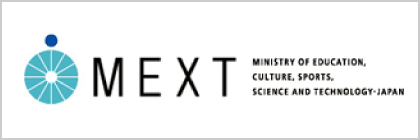Excavating earthenware:
Technology development-type research for construction of 22nd-century archaeological study and its social implementation
| Number of Research Area | 20A102 |
|---|---|
| Term of Project | FY2020-2024 |
| Head Investigator | OBATA, Hiroki |
| Research Institution | KUMAMOTO University, Faculty of Humanities and Social Sciences |
| URL | https://www.fhss.kumamoto-u.ac.jp/archaeology/earthenware/en/ |
1. Details of Research Area
Pottery has been studied for measurement of space and time for about 100 years in Japanese Archaeological discipline. The precision of the chronology is unparalleled in the world. Furthermore, in the 21st century, high-precision dating technology was developed, and by giving more accurate dating to pottery, detailed and accurate spatiotemporal arrangement (chronology) became possible, not only inside the archipelago but also with other countries. Chronological parallel relationships have also been grasped. On the other hand, it was clarified by the impression researches of pottery that frequently have taken place since around 2005 that various information other than the shape and decoration pattern is latent in this pottery. Cultivated plants and household pests detected by this method not only indicate that synanthropic organisms closely related to humans are lurking in pottery but also became an important basis to know when the cultivation of legumes in the Jomon period started and developed and when cereal grains, such as rice and foxtail millet, introduced into Japan from the continental region of East Asia. In this Research area, to solve the problems that previous "impression method" have, we establish the new academic discipline "Earthenware comprehensive analysis study" which is consisted of the development of X-ray CT technology for detection of organic inclusions and AI technology for identification of them, the development of identification technique for charred organic materials in/on a potsherd, the construction of high-precision chronology of biological groups incorporated in earthenware by C14 dating, and the reconstruction of pottery usage by chemical analysis, with changing the main target of study from inorganic inclusions (minerals) in clay paste to organic inclusions (plants). Our final aim is to seek an answer against a question in human history "what did agriculturalization bring to mankind?" and implementing the innovation method, change archaeological society.
2. Call for Proposals and Expectations for Publicly Offered Research, etc.
Publicly offered research targets researches that supplements or further develops the concept of the Research Area. Furthermore, in addition to the research linked to planned researches, another major framework in which existing research materials, not limited to earthenware, will be reused is hopeful, in the framework of forward-looking "construction of future archaeological materials" (Research Items C). Research Group A01 is the basis of the A01 Planned Research Group's AI-based identification and development research. It costs about 3 million yen because it requires equipment to process a large amount of data at high speed. A02 and A04 Research Groups are related to food storage and insect control methods. These researches contribute to identifying the plant and animal samples collected by the A02 Planned Research Group and to restore the human lifestyle. It costs about 2 million yen because it is mainly used for collecting historical sources and experiments. About 2 million yen for A03 Research Group study the origin of clay materials for each period from the Jomon period to the Yayoi period by measuring and experimenting. Research Group B01 is a study to improve further the efficiency of dating method using trace carbon, which is the basis of this research area. It is about 3 million yen because it involves many experiments. B02 is based on dating, such as carbon 14. This research reveals precise times and duration of construction and use of remains related to plants' use and production, for example, paddy field. The cost is about 3 million yen because it involves a large number of dating. As new research items, Research Group C01 develops technology that enables type identification and classification of earthenware using the DL method of AI, extraction of new historical facts from various archaeological materials, etc. We require Research Group C02 to develop analytical methods or utilization methods that create new historical images and theories. Since there are many trial parts, the price is about 2 million yen per case.
3. Research Group, Upper Limit of Annual Budget and Number of research projects scheduled to be selected
| Research Group | Upper Limit of Annual Budget (Million yen) | Number of research projects scheduled to be selected |
|---|---|---|
| A01 Basic and diverse model construction research for identification of nuts and insect impressions by AI | Three millions yen | 1 |
| A02 Archaeological and ethnographic study on prehistoric ancient food storage and insect repellent | Two millions yen | 1 |
| A04 Experimental study on the composition and utilization of carbonized bulk of seeds | Two millions yen | 1 |
| A03 Estimation of clay provenance by earthenware magnetic susceptibility | Two millions yen | 1 |
| B01 System development research to improve the efficiency of trace sample C 14 dating | Three millions yen | 1 |
| B02 Development research of a detailed time estimation for the formation process of plant-based relics by high-precision C 14 dating | Three millions yen | 1 |
| C01 Development research of existing archaeological remains reuse and new analytical methods | Two millions yen | 1 |
| C02 Development research of type identification system by AI (DL method) | Two millions yen | 1 |


